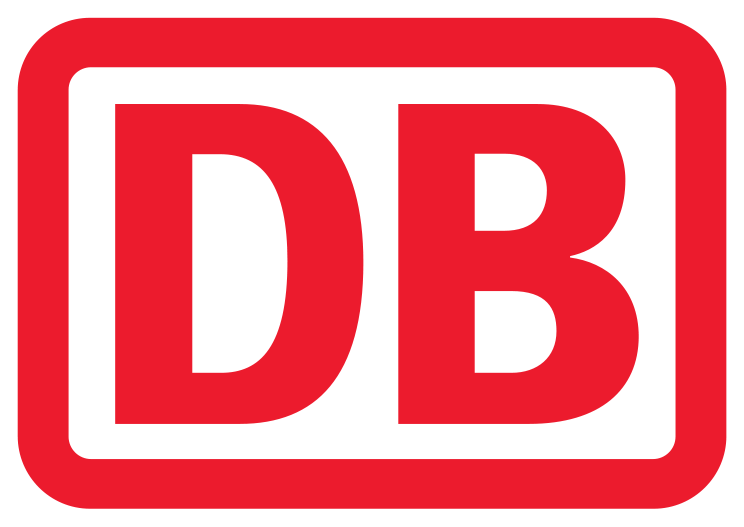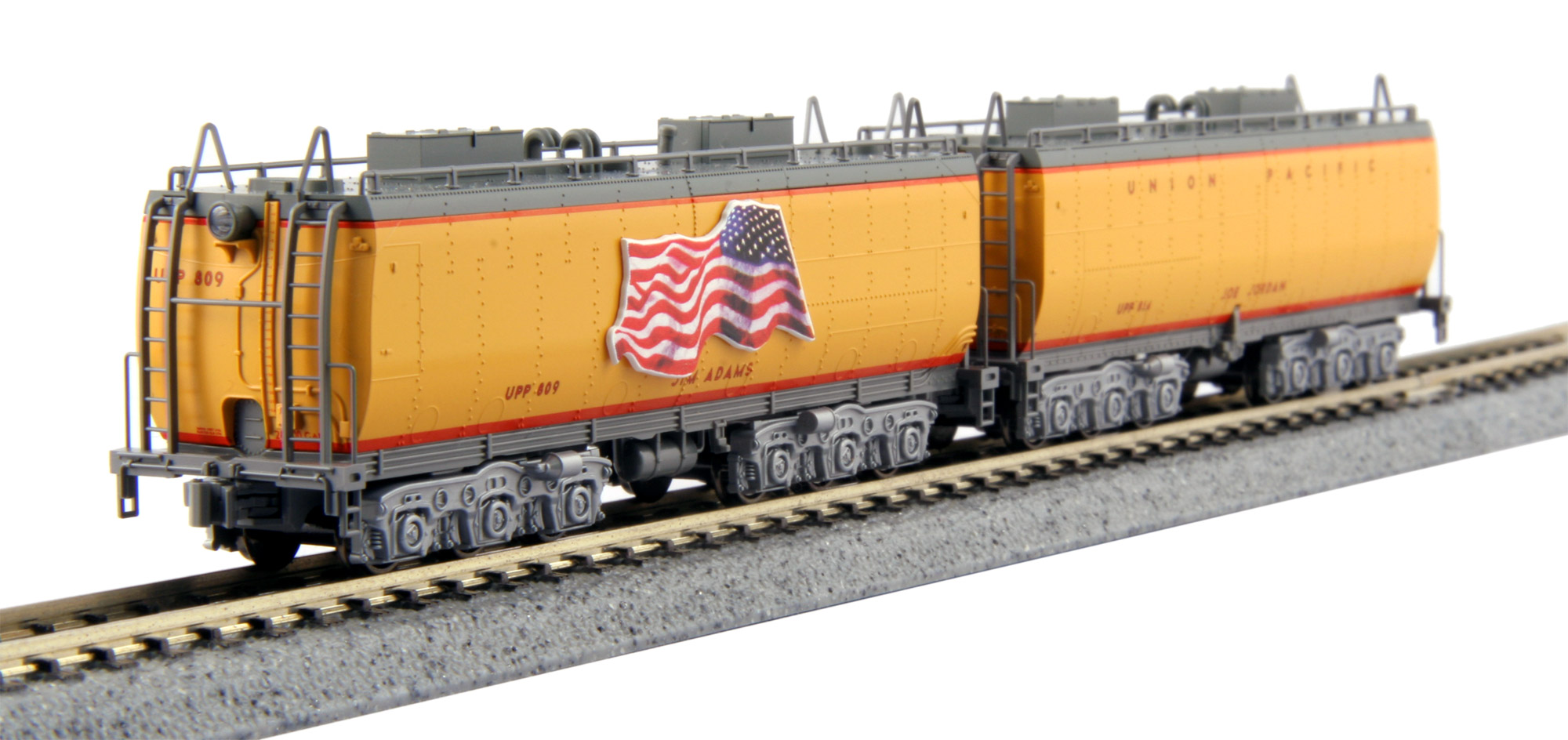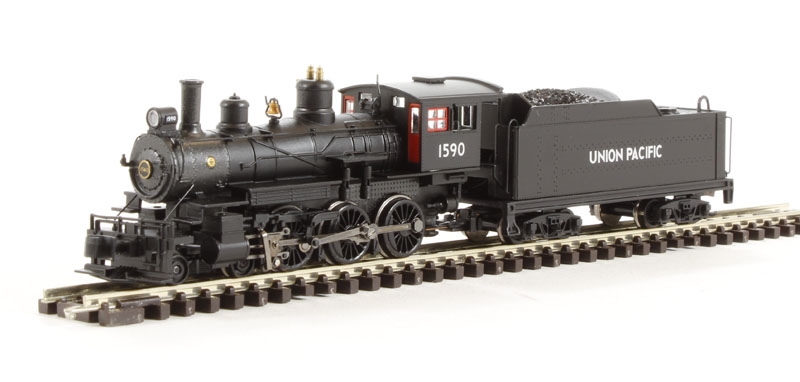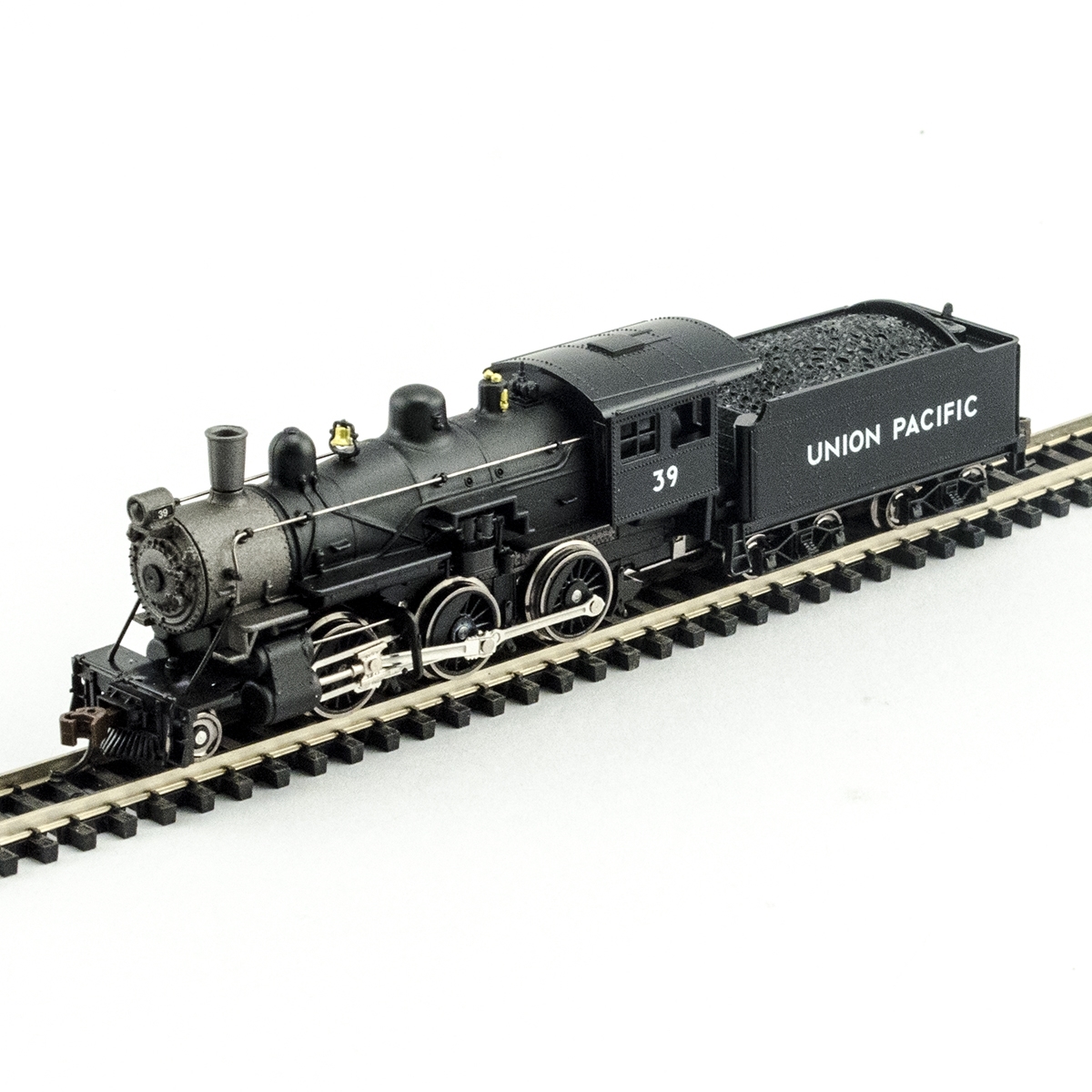Prototype History: The Class S 3/5 engines of the Royal Bavarian State Railways (Königlich Bayerische Staatsbahn) were express train steam locomotives with a 4-6-0 wheel arrangement. Between 1903 and 1907 Maffei delivered three batches of 39 locomotives in all. They had a four-cylinder, saturated steam compound engine. Unlike their forerunners, the Bavarian Class C V, the inside high-pressure cylinders and the outside low-pressure cylinders were angled and worked on the first coupled axle.
From the second series, built in 1904, the boiler pressure of the S 3/5 was raised from 14 to 16 bar (1,400 to 1,600 kPa; 200 to 230 psi). The tube lengths and diameter of the inside cylinders were also changed.
The S 3/5 engines built from 1904 were technically closely related to the S 2/5 which was being developed in parallel. The two classes only differed in their wheel arrangement and the larger coupled wheel diameter on the S 2/5; the boiler and running gear were the same and thus also their output power. Even the permitted top speed was identical on both classes (110 km/h or 68 mph). The S 3/5 N engines were, in terms of tractive effort (300 tonnes or 295 long tons or 331 short tons at 100 km/h or 62 mph), clearly superior to the S 2/5, because they had three driven axles. S 3/5 locomotives were stabled in the locomotive workshops at Munich I and Nuremberg.
From the second series, built in 1904, the boiler pressure of the S 3/5 was raised from 14 to 16 bar (1,400 to 1,600 kPa; 200 to 230 psi). The tube lengths and diameter of the inside cylinders were also changed.
The S 3/5 engines built from 1904 were technically closely related to the S 2/5 which was being developed in parallel. The two classes only differed in their wheel arrangement and the larger coupled wheel diameter on the S 2/5; the boiler and running gear were the same and thus also their output power. Even the permitted top speed was identical on both classes (110 km/h or 68 mph). The S 3/5 N engines were, in terms of tractive effort (300 tonnes or 295 long tons or 331 short tons at 100 km/h or 62 mph), clearly superior to the S 2/5, because they had three driven axles. S 3/5 locomotives were stabled in the locomotive workshops at Munich I and Nuremberg.
Road Name History: Deutsche Bahn AG (abbreviated as DB, DB AG or DBAG) is a German railway company. Headquartered in Berlin, it is a private joint-stock company (AG), with the Federal Republic of Germany being its single shareholder. Deutsche Bahn describes itself as the second-largest transport company in the world, after the German postal and logistics company Deutsche Post / DHL, and is the largest railway operator and infrastructure owner in Europe. It carries about two billion passengers each year.
Deutsche Bahn (literally "German Railway" in German) came into existence in 1994 as the successor to the former state railways of Germany, the Deutsche Bundesbahn ("German Federal Railway") of West Germany and the Deutsche Reichsbahn ("German Empire Railway") of East Germany. It also gained ownership of former railway assets in West Berlin held by the Verwaltung des ehemaligen Reichsbahnvermögens (Administration of the Former Reichsbahn Assets).
Deutsche Bahn (literally "German Railway" in German) came into existence in 1994 as the successor to the former state railways of Germany, the Deutsche Bundesbahn ("German Federal Railway") of West Germany and the Deutsche Reichsbahn ("German Empire Railway") of East Germany. It also gained ownership of former railway assets in West Berlin held by the Verwaltung des ehemaligen Reichsbahnvermögens (Administration of the Former Reichsbahn Assets).
Brand/Importer Information: Trix is a German company that originally made Trix metal construction sets. one of its co-founders was Stephan Bing, the son of the pioneer toy-maker industrialist Ignaz Bing. In 1935 the company began producing the electrically powered model trains that it became famous for, under the Trix Express label. Prior to the outbreak of World War II the Trix company produced a small range of fairly unrealistic AC powered three rail models running at 14 volts.
N gauge models under the Minitrix brand were made from the late 1960s mostly of European prototypes (German and British primarily). North American prototypes were also manufactured and marketed under the Aurora "Postage Stamp" brand; later these items were sold under the American Tortoise, Model Power and Con-Cor brands. Trix sometimes utilized North American consultants to aid in the design of this portion of the product line. The "Hornby Minitrix' brand was used in the 1980s for a short lived range of British outline models using the earlier product tooling.
Trix's owner in the 1980s and 1990s was Mangold, which went bankrupt in the late 1990s and Märklin purchased the assets in January 1997. In part, this purchase was a reflection of Märklin's need for added production capacity; Trix had been manufacturing certain items for Märklin in previous years. The purchase was also in response to the earlier purchase of the Karl Arnold company by the Italian company Rivarossi; Märklin were very keen to take over Trix market share in 2-rail H0 and especially Minitrix, until then Märklin had not marketed N gauge models. In 2003, Märklin introduced its first N gauge models under the well established Minitrix brand. A number Märklin H0 scale three-rail AC locomotives have also been introduced in two-rail DC versions under the Trix logo and many models are shared between the two brands.
From Wikipedia
N gauge models under the Minitrix brand were made from the late 1960s mostly of European prototypes (German and British primarily). North American prototypes were also manufactured and marketed under the Aurora "Postage Stamp" brand; later these items were sold under the American Tortoise, Model Power and Con-Cor brands. Trix sometimes utilized North American consultants to aid in the design of this portion of the product line. The "Hornby Minitrix' brand was used in the 1980s for a short lived range of British outline models using the earlier product tooling.
Trix's owner in the 1980s and 1990s was Mangold, which went bankrupt in the late 1990s and Märklin purchased the assets in January 1997. In part, this purchase was a reflection of Märklin's need for added production capacity; Trix had been manufacturing certain items for Märklin in previous years. The purchase was also in response to the earlier purchase of the Karl Arnold company by the Italian company Rivarossi; Märklin were very keen to take over Trix market share in 2-rail H0 and especially Minitrix, until then Märklin had not marketed N gauge models. In 2003, Märklin introduced its first N gauge models under the well established Minitrix brand. A number Märklin H0 scale three-rail AC locomotives have also been introduced in two-rail DC versions under the Trix logo and many models are shared between the two brands.
From Wikipedia
Item created by: gdm on 2016-08-15 17:02:38. Last edited by gdm on 2019-05-19 16:02:40
If you see errors or missing data in this entry, please feel free to log in and edit it. Anyone with a Gmail account can log in instantly.
If you see errors or missing data in this entry, please feel free to log in and edit it. Anyone with a Gmail account can log in instantly.











